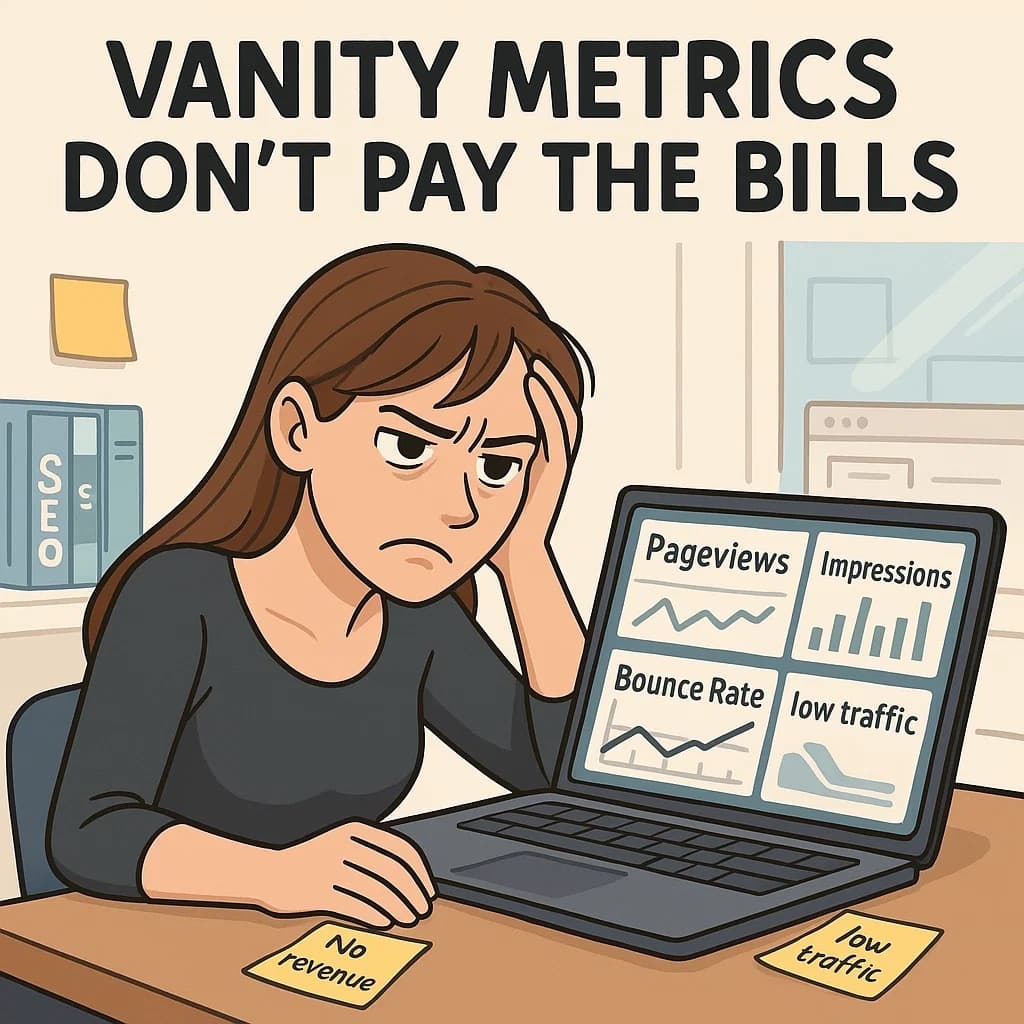
Clicks Don’t Pay the Bills: Use This Audit Framework To Prove Content Revenue [Mozcon 2025 Speaker Series]
Organic traffic doesn’t pay the bills. Not anymore.
For years, we measured content success with traffic, even though it didn't guarantee revenue. SEOs built bloated content clusters in pursuit of scale, often without asking the most important question: What is the potential impact of this page on our business goals?
At MozCon 2025, I will confront two issues we’ve ignored for too long. The long-term impact of producing too much content and why we need a new forecasting model not tied to vanity metrics.
Steal Helen’s content audit framework at MozCon London

The hidden cost of bloated content
Vanity metrics are frustrating because they don’t treat SEO like a profit-and-loss function, where each page has to earn its keep. Recently, I was working on an enterprise e-commerce site with billions of URLs.
I wanted to answer three questions:
- Can Google crawl all of these pages?
- How much revenue are they generating?
- How much are they costing the business?
Some answers were easy, like product pages tied to transactions.
But others, like long-tail content, category pages, and middle-of-funnel articles, were harder to measure.
That’s when the frustration hit me.

Every model I looked at tracked traffic, rankings, and impressions, but nothing connected to revenue. I couldn’t find a single framework that helped me answer the only question that mattered:
Is this page worth the cost?
The Pareto principle is true: 20% of pages drive 80% of results
SEO operates under the assumption that traffic leads to conversions, and conversions justify the investment. In reality, most websites follow the Pareto principle, where 20% of pages drive 80% of the results.
The other 80% carries massive overhead costs in server load, data transfer, and crawl budget strain.

The SEO strategies that worked in the past won’t work today because:
- AI overviews are cannibalizing clicks
- Zero-click searches are on the rise
- The SERPs are flooded with near-identical content chasing the same keywords
If you’re still measuring success with traffic and search volume, you’re working with outdated metrics. Leadership wants to know what’s generating revenue and what isn’t. But you can’t answer their questions if you don’t know where to trim waste.
No more “it depends”: Use my audit framework to prove content success
We can’t keep defending SEO by saying, “It depends.” We need frameworks that prove impact.
That’s why I built a model to measure the cost and value of organic content, page by page.

In my MozCon talk, you’ll learn how to:
- Calculate cost per pageview using real infrastructure metrics
- Evaluate whether a page drives direct revenue, assists conversions, or wastes resources
- Attribute SEO’s impact across performance channels (like paid, social, and email)
- Position content marketing as a revenue channel, not just brand awareness
This framework helped me cut millions of pages from an enterprise site and saved my dev team a significant portion of their budget. The data from my audit also helped me prove impact and get credit for my work.
Maximize ROI from your content efforts with Helen's audit framework

Why this matters now
LLMs and AI search have changed SEO forever. Traffic is flat, and click-through rates are dropping.
If you’re tired of fighting for budget or proving the value of your team’s work with half-baked content audits, this talk is for you.
I’ll give you a content audit framework that forecasts revenue impact and speaks the language of your decision makers.
🎟️ Don’t miss it
Join me at MozCon London to understand what content success looks like in a zero-click world.
If you're travelling with friends for MozCon London, use this bulk discount code to get a free seat when you buy three tickets.
Grab Helen's framework to predict content ROI at MozCon London

The author's views are entirely their own (excluding the unlikely event of hypnosis) and may not always reflect the views of Moz.

![Convince Your Boss to Send You to MozCon 2025 [Plus Bonus Letter Template]](https://moz.rankious.com/_moz/images/blog/banners/eee4a4a8-d4aa-457e-80b1-0ffa186b88ff_2025-06-27-174747_coli.png?w=580&h=196&auto=compress%2Cformat&fit=crop&dm=1751046467&s=454333def17ba9d472d3d98b6786741e)

![How To Drive More Conversions With Fewer Clicks [MozCon 2025 Speaker Series]](https://moz.rankious.com/_moz/images/blog/banners/Mozcon2025_SpeakerBlogHeader_1180x400_RebeccaJackson_London.png?w=580&h=196&auto=compress%2Cformat&fit=crop&dm=1750097440&s=296c25041fd58804005c686dfd07b9d1)